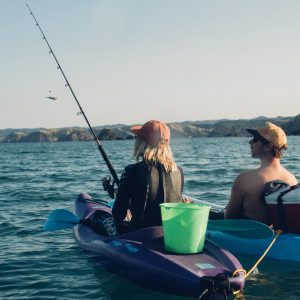As we close in on another year of fishing LegaSea is celebrating that in 2017 we have collectively spent about one billion dollars chasing our dreams. This recreational activity generated over one and a half billion dollars of economic activity in New Zealand. This is big bucks when you consider we take less than 3% of the total harvest from our marine waters, including the Exclusive Economic Zone, and less than 20% of total harvest from the inshore fisheries in which we have a fishing interest.

There is no doubt that recreational harvest has a significant impact in some shellfish fisheries and a few inshore finfish stocks such as snapper and kahawai on the northeast coast of the North Island, and blue cod at the top of the South Island. Most other inshore finfish stocks are dominated by commercial harvest.
So when you’re tucking into your festive barbeque or sharing a seafood delight this summer enjoy it because our combined activity has supported over 8100 people in jobs and contributed a conservative $188 million in taxes to help keep New Zealand functioning.
These figures are derived from a 2016 report, Recreational Fishing in New Zealand. A Billion Dollar Industry. The report is a result of two year’s work by local and overseas researchers. The study was commissioned by the New Zealand Marine Research Foundation who were concerned that the recreational fishing industry was not being given the credit it was due because there was no economic data on our fishing.
In the absence of hard data it was easy for the government to favour commercial interests who could easily quantify their activity through landings and sales data. Yet the recreational fishing industry is based on a broad range of retailers, boat builders, tackle manufacturers, suppliers, marinas, motels, restaurants, charter vessels, media and more.
What’s even more encouraging is that there is potential for economic growth, especially in coastal towns and regions, if our fisheries are kept strong and resilient. This is where we all have a part to play.
Fisheries management is complex and at times controversial. It requires the balancing of environmental, social, economic and cultural values. Ultimately it is the Minister of Fisheries who is responsible getting the balance right.
As we saw during the 2013 Snapper 1 debate, it was the public backlash to the Ministry’s outrageous proposals to cut recreational access while increasing the commercial catch limit that influenced the Minister. Nathan Guy went on to increase the allowance for non-commercial customary and recreational interests while maintaining the existing commercial catch limit.
While the individual snapper bag and size limits changed, the 500 tonne increase in the overall allowance has been available to non-commercial fishers (if you’re in the right place at the right time) or allowed to stay in the water and breed.
The snapper decision was only made possible because the Minister can apply discretion to achieve the best outcome for the nation. Moreso, it was people like us standing up for ourselves and our kid’s future fishing interests that made the difference. Kia kaha to you all.





